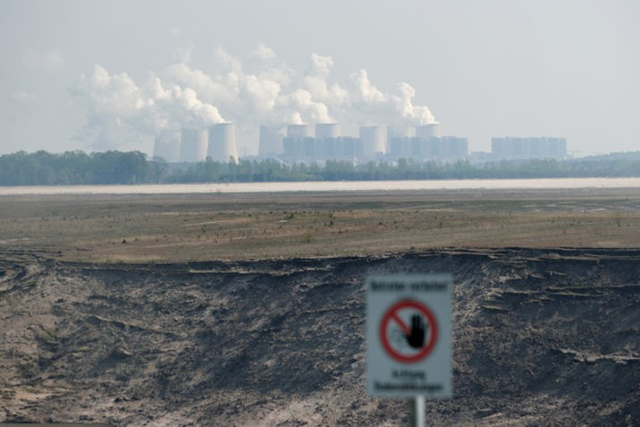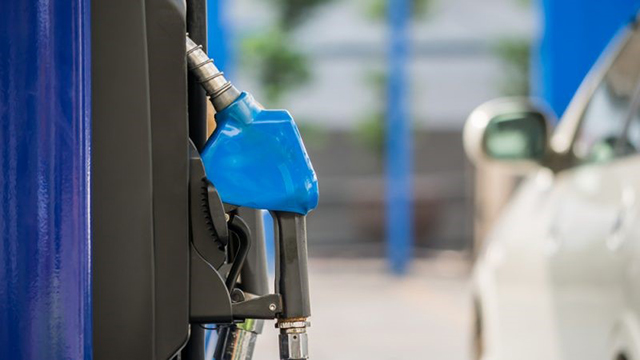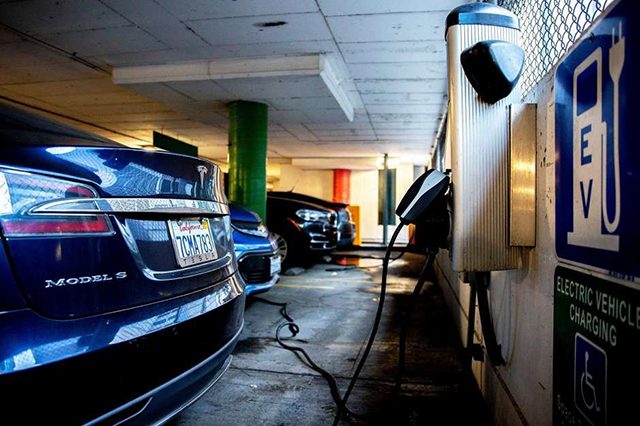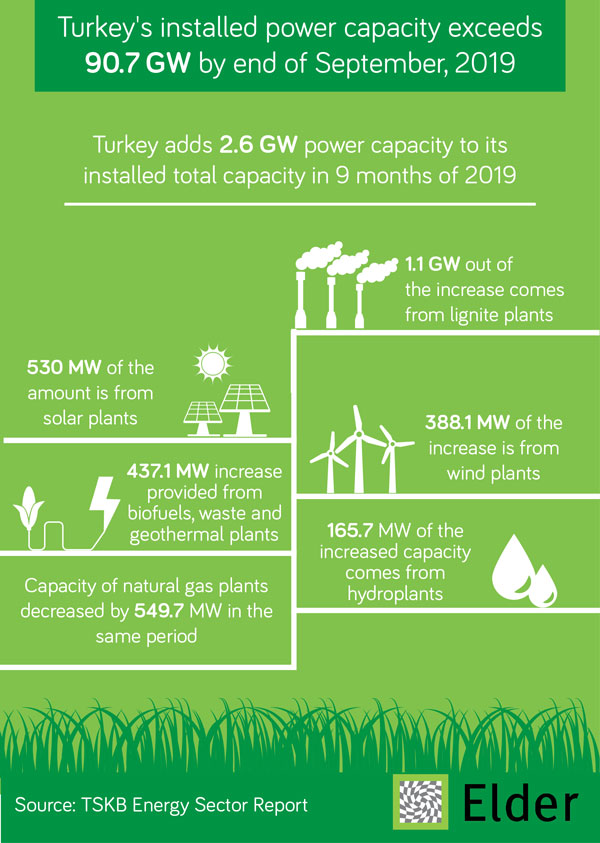
Turkey held the first Energy Communication Summit at which Energy and Natural Resources Minister Fatih Donmez pointed out the significance of communication for a better understainding of the whole sector.
The summit held at the Energy and Natural Resources Ministry in Ankara was organized by Energy Communication Group (EIG), consisting of representatives from the public and private sector communication departments operating in the field of communication and education in the energy sector.
The summit gathered the communication, human resources and customer experience professionals to discuss details strategic issues of communication from consumer awareness to corporate social responsibility projects crisis management and healthy communication channels.
Donmez opened the summit with his speech by giving information on one-year journey of the EIG established with the initiative of Energy Market Regulatory Authority (EMRA), Association of Distribution System Operators (ELDER), Natural Gas Distribution Companies Association of Turkey (GAZBIR) and Turkish Oil Industry Association (PETDER) and other sector partners.
Pointing out that communication activities are not a necessity but a responsibility, Donmez said:
“Accept the communication as a mirror for a better understanding of the business you are carrying out with and a better understanding of the society.
Whatever you project in that mirror, your target audience will see it. We have to constantly measure and evaluate perception, attitudes and awareness levels. We have to poll at the center of our business.”
About the EIG:
The Energy Communication Group (EIG) was established in 2018 with the participation of executives from the public and private sectors operating in the field of communication and education in the energy sector which is a voluntary cooperation platform that does not have legal entity.

The Trans-Anatolian Natural Gas Pipeline (TANAP) has made history by becoming the first pipeline network to deliver natural gas from Azerbaijan through Turkey and on to Greece, the first stop in its European leg, the Trans Adriatic Pipeline (TAP).
"Today, we're are proud to complete a seven-and-a-half-year long, difficult process with ultimate success in the joint efforts of Turkey, Azerbaijan and Georgia," President Recep Tayyip Erdogan said Saturday in an address at the inauguration ceremony for the TANAP-Europe connection held at the border city of Edirne.
Referring to TANAP, which launched in June 2018, as the backbone of the multinational Southern Gas Corridor (SGC) project, Erdogan praised the project's completion and lauded the spirit of cooperation shown by partner countries which remained strong despite numerous hurdles.
Dubbed the "Silk Road" of energy, both TANAP and TAP constitute parts of the $8.5-billion Southern Gas Corridor (SGC), a multinational natural gas pipeline project supported by the European Commission and financed by the World Bank, European Bank for Reconstruction and Development (EBRD) and the Asian Infrastructure Investment Bank (AIIB).
"The rich natural resources we possess can now be shared with the people of other nations in the region," Erdogan said, adding that "TANAP does not only guarantee Turkey's energy security, but aims to bolster the energy supply security of European countries as well."
The 3,500 kilometers-long SGC consists of three sections: the South Caucasus Pipeline, TANAP and TAP. The Turkish leg of the project TANAP passes through around 600 villages before it reaches the border, where it will go on to pump energy to European markets. So far, TANAP has delivered nearly 3.4 billion cubic meters of natural gas to the Turkish network.
SGC, Petroleum Pipeline Corporation (BOTAS), BP and SOCAR Turkey own 51%, 30%, 12% and 7% of the shares in TANAP, respectively.
The 4.5 billion euro ($5.1 billion) TAP pipeline will traverse Greece and Albania before plunging into the Adriatic Sea on the way to Italy. Azerbaijani gas is expected to reach European markets by the second half of next year and currently, more than 90% of the project has been completed.
The 1,850 kilometers-long TANAP carries Azerbaijani gas from the Shah Deniz-2 field and other fields in the southern Caspian Sea to Turkish, Georgian and European markets. While Turkey receives 6 billion cubic meters of gas, an additional 10 billion cubic meters will be transferred to the European gas network.
Azerbaijani President Ilham Aliyev in his address said TANAP would bring peace and prosperity to the region. "I believe TANAP will have a long-serving life and will bring peace and prosperity to Turkish, Azerbaijani and regional people," Aliyev said.
Drawing attention to the significance of energy supply security internationally, the Azerbaijani president indicated that the TANAP had a mediatory function, encouraging cooperation between nations based on shared energy goals.
"We cannot see TANAP and the SGC as purely energy infrastructure projects. These projects pave the way for other cooperation mechanisms and platforms. Our energy projects have already spawned more others that contribute to the regional development and stability," Aliyev said.
The Azerbaijani president also drew attention to another significant energy project jointly accomplished by Turkey and Azerbaijan. Speaking of the Baku-Tbilisi-Ceyhan (BTC) oil pipeline – delivering Azeri oil to Turkey and global markets, Aliyev stressed the importance of the energy project for the supply security of global buyers.
Operating since 2006, the BTC has delivered more than 450 million tons of Azeri oil in addition to the crude of other countries in the region. In an elaboration of how BTC functions as an opening gate for other suppliers, he noted that 27 million tons of Turkmenistan oil has been exported to the global markets via the BTC. While 12 million tons of Kazak oil has flown through the BTC, 7 million tons of Russian crude oil has also reached global markets so far. "The BTC has become an excellent energy infrastructure project for the other oil producers," Aliyev remarked.
Source: Daily Sabah

Battery prices, which were above $1,100 per kilowatt-hour in 2010, have fallen 87% in real terms to $156/kWh in 2019. By 2023, average prices will be close to $100/kWh, according to the latest forecast from research company Bloomberg New Energy Finance (BNEF). Cost reductions in 2019 are thanks to increasing order size, growth in battery electric vehicle sales and the continued penetration of high energy density cathodes. The introduction of new pack designs and falling manufacturing costs will drive prices down in the near term.
BNEF’s 2019 Battery Price Survey predicts that as cumulative demand passes 2TWh in 2024, prices will fall below $100/kWh. This price is seen as the point around which EVs will start to reach price parity with internal combustion engine vehicles. However, this varies depending on the region of sale and vehicle segment. The report further examines in detail how manufacturers and automakers alike can continue to reduce prices.
James Frith, BNEF’s senior energy storage analyst and author of the report, said: “According to our forecasts, by 2030 the battery market will be worth $116 billion annually, and this doesn’t include investment in the supply chain. However, as cell and pack prices are falling, purchasers will get more value for their money than they do today.”
BNEF’s analysis finds that as batteries become cheaper, more sectors are electrifying. For example, the electrification of commercial vehicles, like delivery vans, is becoming increasingly attractive. This will lead to further differentiation in cell specifications, with commercial and high-end passenger vehicle applications likely to opt for metrics like cycle life over continued price declines. However, for mass-market passenger EVs, low battery prices will remain the most critical goal. Continued cost declines for batteries in the 2020s will be achieved through reduced manufacturing capital expenditures, new pack designs and changing supply chains.
Logan Goldie-Scot, head of energy storage at BNEF, said: “Factory costs are falling thanks to improvements in manufacturing equipment and increased energy density at the cathode and cell level. The expansion of existing facilities also offers companies a lower-cost route to expand capacity.”
Source: Smart Energy International

The European Union’s proposed “carbon border tax” on imports could introduce uncertain and harmful factors to otherwise friendly cooperation in climate talks, an adviser to China’s negotiating team at a United Nations conference said on Wednesday.
The EU’s senior climate official said in October the newly installed European Commision would push for a tax to account for carbon emissions of foreign firms. Such a tax would likely raise the price of Chinese products in Europe.
That could trip up talks underway in Madrid to settle the final items of the Paris Agreement before it enters an implementation phase next year, when countries are set to unveil more ambitious targets for cutting greenhouse gases.
The tax would run counter to the Paris accord which is founded on multilateralism and countries’ voluntary participating, said He Jiankun, a professor at Tsinghua University who is traveling with China’s official delegation.
“If this carbon tax is unilaterally instituted, it could bring uncertain and some harmful factors to the process,” he told reporters, stressing it was his personal opinion.
“Currently adopting this type of cross-border measure could influence the friendly atmosphere of cooperation in the process of confronting climate change.”
Last week, China issued a report saying the tax would seriously harm global efforts on climate change.
At the time, Zhao Yingmin, China’s vice minister of environment, said that unilateralism and protectionism should not be allowed to hurt the will of countries to jointly tackle climate change. Zhao is the ranking member of China’s negotiations team at the climate talks.
The tax is part of the European Green Deal, the signature environmental policy of the new European Commision, and aims to protect European firms from unfair competition by raising the cost of products from countries taking inadequate action on climate change.
Source: Reuters

The recently updated Renewable Energy Directive (RED II) has drawn much criticism and it would be good for the European Commission to look at it again, a high-ranking official in the EU executive has admitted.
“I think that probably the Commission will do good to look at it, again, whether this is going to lead to a new proposal, or whatsoever,” Artur Runge-Metzger, director of the Commission’s Climate Action directorate, said at a Euractiv event last week.
“I hear so much criticism around,” he added.
As part of the ‘Clean Energy for All Europeans’ package, EU member states revised the Renewable Energy Directive in an effort to both boost the use of renewables and help the bloc meet its obligations under the Paris Agreement.
Particularly, the EU decided to set a 14% target for renewables in transport.
Currently, EU countries are tweaking their draft National Energy and Climate Plans (NECPs), which will set the precise mixture of renewable energies for the coming decade. The deadline to submit their finalised plans is by the end of the year.
However, Farm Europe, a think tank specialising in agricultural topics, recently published a study suggesting that the current draft plans risk being ineffective due to the lack of calculation method for the cost-effectiveness of the proposals.
The study emphasised that the vast majority of member states, such as Germany, Sweden, the Netherlands and Poland, “vaguely” rely on electrification.
But the cost of transition to electric cars is not calculated in any member state, according to the study, and the slow progress when it comes to electrification infrastructure could be an obstacle for quick deployment.
Asked by EURACTIV how a policy can be effective without having assessed first the cost, Runge-Metzger disagreed “very strongly” with the view that member states have not taken costs into account when they were drafting the national plans.
“I think that is completely wrong […] We’re not getting all the details and putting them into the NECPs as [in this case] an NECP could easily become a 1,500-page document if you want to put all the details,” he said.
“The Commission has said in its recommendations that it would be helpful to provide, in some instances, clearer numbers and clearer figures. There’s no doubt about it but I reject the argument that the member states did not look at cost at all,” he emphasised, adding that any government that did not do so would be out of office soon.
Runge-Metzger added that in the new year all relevant stakeholders should sit around the same table and have a deep reflection on what is next. “I think all sectors will have to contribute all technologies that are available, we will have to look at it again,” he said.
Speaking to EURACTIV on the sidelines of the event, Emmanuel Desplechin, secretary-general of the EU ethanol association (ePURE), said decarbonising transport fuels is the missing element in the EU climate and energy package between the RED, which spurs renewable energy deployment, and the CO2 targets for vehicles, which only consider reducing tailpipe emissions.
Desplechin referred to the Fuel Quality Directive (FQD), which sets environmental requirements for petrol and diesel fuel in order to reduce their air pollutant emissions.
“The FQD, which requires a reduction of the GHG intensity of transport fuels by at least 6% in 2020, should already be making a major impact on emissions,” he said.
But according to new data from the European Environment Agency, there’s still a lot of work to do by next year; most countries are falling short of the targets, he added.
For Desplechin, restoring investors’ confidence requires the Commission to ensure that the 2020 targets are there to be met.
“The FQD goes beyond what kind of cars people drive and improves the GHG of the fuels people put in them, allowing low carbon fuels such as ethanol blends to contribute to transport decarbonisation.”
“Meeting the FQD target and keeping it in place beyond 2020 would make the benefits of the Green Deal start paying off in the existing car fleet, and also in the vehicles that will represent an important share of the market for decades to come,” Desplechin concluded.
Source: Euractiv

California’s rebate program to coax more drivers to buy electric vehicles just got less generous, especially for those looking to spend on a luxury model.
Effective Tuesday, state regulators have stopped offering rebates for buyers of electric cars or plug-in hybrid vehicles that cost more than $60,000 — a move that will make buyers of high-end Tesla models dig deeper into their pockets.
The state Air Resources Board, the agency that regulates the program, has also reduced the standard rebate by $500 per vehicle, from $2,500 to $2,000 for all-electric cars, and eliminated rebates for plug-in hybrid cars with an electric-battery range of less than 35 miles.
Agency officials said the changes will ensure that more people will receive rebates, particularly those with low incomes. Currently, funding for the program runs out every fiscal year, forcing many buyers to join a waiting list that can extend for months.
But some advocates for clean cars have criticized the move, saying reducing rebates could deter buyers at a crucial time, as electric car sales surge following years of sluggish growth. Electric cars are typically more expensive than comparable gas-powered models, and the state rebates, combined with a federal tax break, can slice thousands of dollars off the sticker price.
Melanie Turner, a spokeswoman for the Air Resources Board, said the new rules put an emphasis on rebates for disadvantaged communities, including areas with higher pollution and lower incomes.
Under the rules, low-income buyers will still be eligible for higher rebates, which are unchanged: $4,500 for all-electric cars and $3,500 for hybrids that run on a combination of gas and plug-in battery.
“California simply cannot meet its clean air or climate goals without transforming and cleaning up all our cars and trucks with an emphasis on putting ultra-clean vehicles in communities that need them the most, which are those most impacted by pollution,” Turner said in an email.
California leads the nation in electric-car sales, and the state has issued rebates to 354,064 car buyers since its program began in 2011. About 5% of rebates have been earmarked for low- and moderate-income people, currently defined as those earning less than $50,730 for a household of two.
Assemblyman Phil Ting, D-San Francisco, a vocal advocate for electric cars in the Legislature, criticized the changes. He said the new rules create confusion for buyers.
“The rebate program could be killed by death by 1,000 bureaucratic memos,” Ting told The Chronicle.
Ting sponsored a bill this year that could have tripled rebates, but it died in committe. He said the state should ramp up incentives and decrease them over time with a specific end date, so people have incentive to buy now.
The Air Resources Board plans to spend $238 million on rebates this year. But the program has no specified end date, and recent changes to rebate amounts and eligibility rules were announced with a month’s notice.
“If you don’t tell people when the deadline is, they’re not going to know,” Ting said of the state’s approach. “It would be like having a Black Friday sale and nobody knows when it is.”
Source: Sfchronicle
Emissions Gap Report 2019
As the world strives to cut greenhouse gas emissions and limit climate change, it is crucial to track progress towards globally agreed climate goals. For a decade, UNEP’s Emissions Gap Report has compared where greenhouse gas emissions are heading against where they need to be, and highlighted the best ways to close the gap.
Please click here to read the full report.

